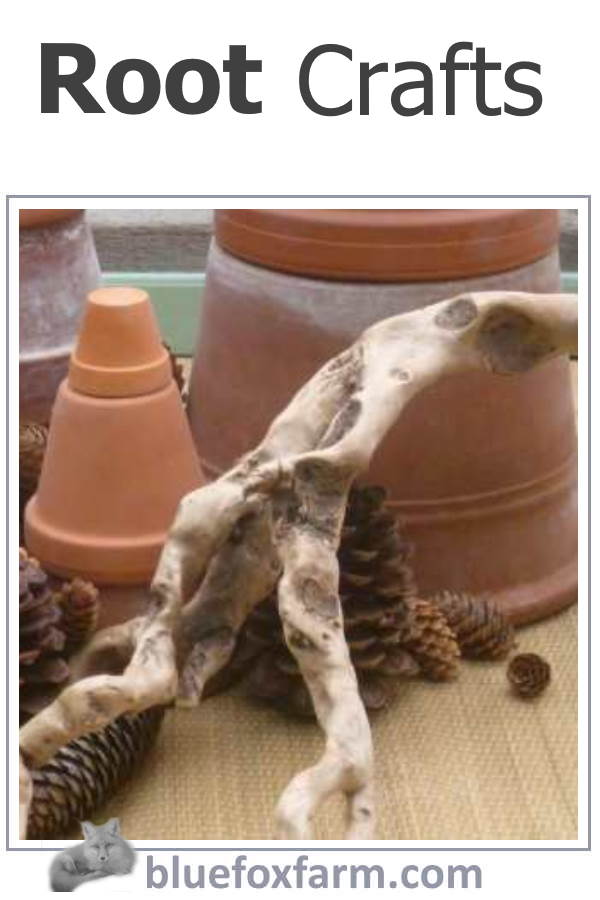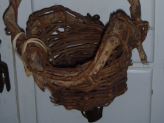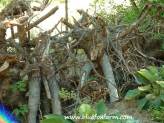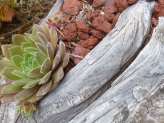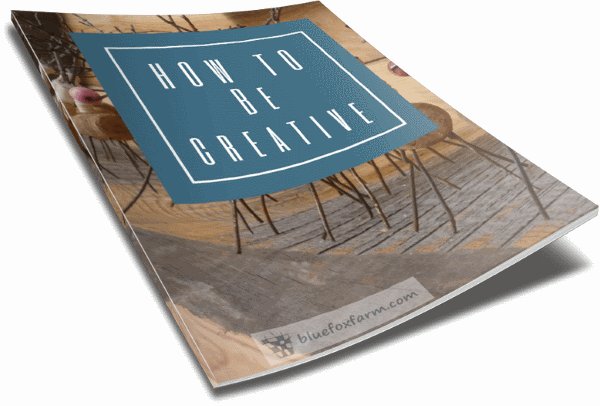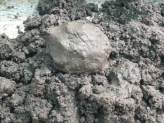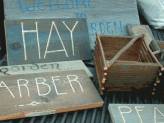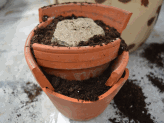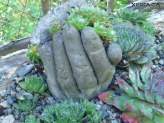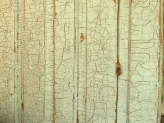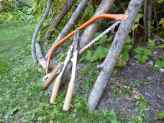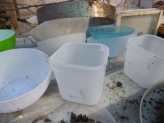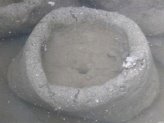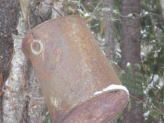Root Crafts
Using Roots for Crafting and Art
Root crafts can be made from many different types of roots, depending mainly on the length and pliability.
Thyme plants have great roots, textured and tobacco coloured, perfect for tying the uprights of twig obelisks together, or simply wrapping into a bow to decorate twig wreaths, a bird cage or other rustic craft.
Carefully dig up shrubs and saplings next time you have to move one, and see if you can salvage some of the long roots for crafts.
Typically, spruce roots have been valued for many crafts, especially baskets made by First Nations people for fruit collecting, catching fish or storage.
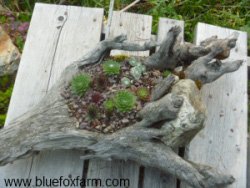
Larger roots can be used for root planters, filled with a cup or two of soilless potting mix and planted with Jovibarba, Sempervivum or other hardy succulents.
Some of the most interesting and beautiful root baskets are made with this unusual natural material.
Sometimes you'll find really interesting forms that resemble creatures or even willow root people.
Harvesting the roots from trees and shrubs for crafts usually entails killing the plant, but in some cases such as harvesting spruce roots, simply digging down a little ways from the tree and harvesting the few smaller roots available will simply encourage the tree to replace them with more.
Use a sharp spade to cut them off in a circle around the live shrub or tree, then a mattock to loosen them out of the soil - keep in mind that they're fragile and snap easily, so work them loose gently.
Find roots on beaches, complete with rocks still encased in the wood - the curved pieces work well for handles on boxes or other crafts.
Learn how to build your very own
Rustic Furniture and Garden Crafts;
(Click on the picture and buy your download now)
Trees have an amazing ability to replace the roots cut off with an abundance of many smaller ones, making it possible to harvest them at a later date.
Continually cutting the smaller roots won’t harm the tree if it’s done in a sustainable manner, only taking a small percentage so the tree can live on.
Learn what it takes to be creative - we all have the gene but how do we develop it? Get the free guide!
Fill in the form below for your copy;
(Don't be disappointed - use an email address that will accept the free download - some .aol email addresses won't.
If you don't see your download within a few minutes, try again with another email address - sorry for the bother.)
